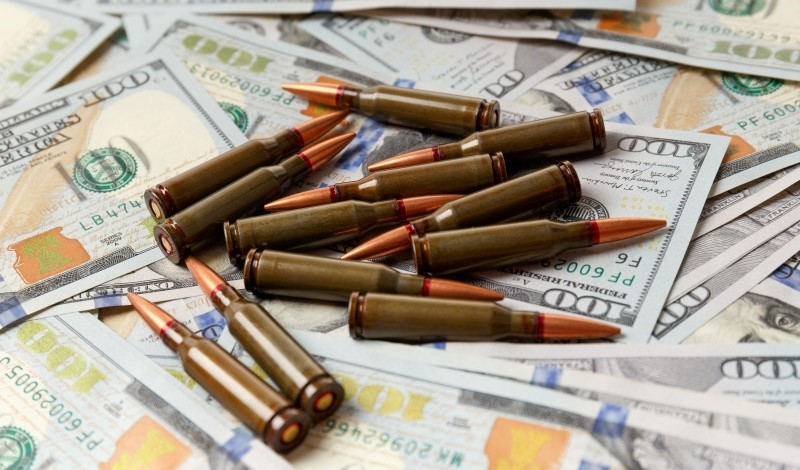
Scholar corrects the narrative that spawned laws prohibiting banks from cutting ties with the gun industry.
Ask gun lobbyists about Operation Choke Point, and they might characterize the U.S. Department of Justice initiative as a “clandestine operation” to cut off the gun industry’s access to banks.
Ask a Texas legislator, and they might agree.
But did this illegal scheme to defund the gun industry actually happen? According to Dru Stevenson, a professor at South Texas College of Law Houston, many allegations surrounding Operation Choke Point are false.
In a recent article, Stevenson revisits the history of Operation Choke Point, arguing that agency action under the antifraud enforcement initiative was legitimate. He reveals how gun lobbyists and anti-regulatory groups spun a narrative of agency overreach to support their own agendas and spur reactionary legislation. Stevenson argues that this legislation—premised on inaccurate information—forces financial institutions to subsidize the gun industry.
Stevenson details the true origins of Operation Choke Point, explaining that he aims “to set the record straight.” He notes that Justice Department investigators sought to detect fraud in online transactions using “choke points,” or avenues through which fraudulently-obtained funds typically pass. When banks and other financial institutions process online payments, they leave a paper trail for Justice Department enforcers to follow. According to Stevenson, the Justice Department designed their choke point crackdown to encourage banks to vet business clients and cut ties with those businesses that were likely to defraud consumers.
To implement the operation, the Justice Department collaborated with U.S. financial regulators, such as the Financial Crimes Enforcement Network and the Federal Deposit Insurance Corporation (FDIC). These agencies identified warning signs of fraud, including deceptive advertising practices and membership in industries with high fraud rates, such as payday lending.
Financial regulators advised banks not to work with businesses displaying warning signs, even though some of those businesses did not engage in illegal activity. Some scholars have criticized regulators for shunning businesses based on industry reputation. But Stevenson retorts that “reputational risk does present financial risks” because stigma can lead to lost business.
In Stevenson’s analysis, Operation Choke Point caused banks to reassess their compliance with federal banking regulations. Some banks found that terminating their relationships with risky businesses also made financial sense because it eliminated banks’ need for extra due diligence.
Operation Choke Point morphed into a political symbol for gun industry lobbyists when a 2011 FDIC newsletter included gun makers and retailers in a list of businesses “associated with high-risk activities,” Stevenson recalls. Although the agency reportedly clarified that it did not discourage banks from providing services to any lawful business—and a congressional audit confirmed this assertion—gun lobbyists nonetheless claimed that the FDIC was overstepping its authority and coercing banks to close gun dealers’ accounts.
The Operation Choke Point narrative also continued to evolve well after the program’s termination, Stevenson notes. After mass shootings in 2017 and 2018, he explains, some banks tried to cut ties with the gun industry. Lobbyists resurrected their Operation Choke Point narrative in revised form: Instead of a government agency conspiracy, Operation Choke Point now stood for a privatized conspiracy of anti-gun bankers.
One article from an industry group accused Operation Choke Point of emboldening “big banks with antigun agendas” to “continue to openly discriminate against firearm business.” Other groups alleged a conspiracy between President Biden and large banks to reinstate Operation Choke Point in its original form. According to Stevenson, all of the allegations stem from unsubstantiated or downright false claims.
Despite its dubious foundations, the gun lobby’s new Operation Choke Point narrative also provoked a legislative reaction, Stevenson explains. Stevenson identifies a trend among legislators to propose antiboycott laws designed to punish financial institutions that refuse to work with the gun industry. In 2021, for example, Texas enacted a law prohibiting state actors from contracting with companies that discriminate against firearm or ammunition manufacturers. The same year, Wyoming passed a bill that went a step further, allowing gun dealers who faced discrimination to sue for treble damages. Gun industry groups have promoted a uniform bill to similar effect.
Stevenson emphasizes that banks might hesitate to work with gun retailers for legitimate reasons, independent of regulatory pressure. These reasons include not only the structure of the gun industry, but also the rise in mass shootings and associated reputational risks banks face. Many gun dealers transact in cash and trade-ins, which can facilitate money laundering and other financial crimes, raising legal risk levels for banks.
Because of new legislative action, banks must now balance these actuarial risks with the threat of consequences under state antiboycott laws.
Yet Stevenson contends that proponents of the legislation ignore these actuarial risk considerations and fail to characterize accurately what Operation Choke Point was—a relatively benign enforcement program. Despite some scholars’ contention that agencies exceeded their statutory authority under the program, Stevenson maintains that regulators merely urged banks to screen for fraud more diligently.
Stevenson hypothesizes that, faced with the threat of sanction or litigation, banks will err on the side of lending to gun dealers and manufacturers, despite the real hazards associated with doing so. The recent antiboycott laws recalibrate the risk calculation in the gun industry’s favor. To Stevenson, this shift constitutes a “state-mandated subsidy” of the gun industry, allowing it to foist a portion of its risks and costs onto banks. Stevenson concludes that the legislators should repeal the antiboycott laws—which rely on false narratives to achieve an inequitable outcome.



